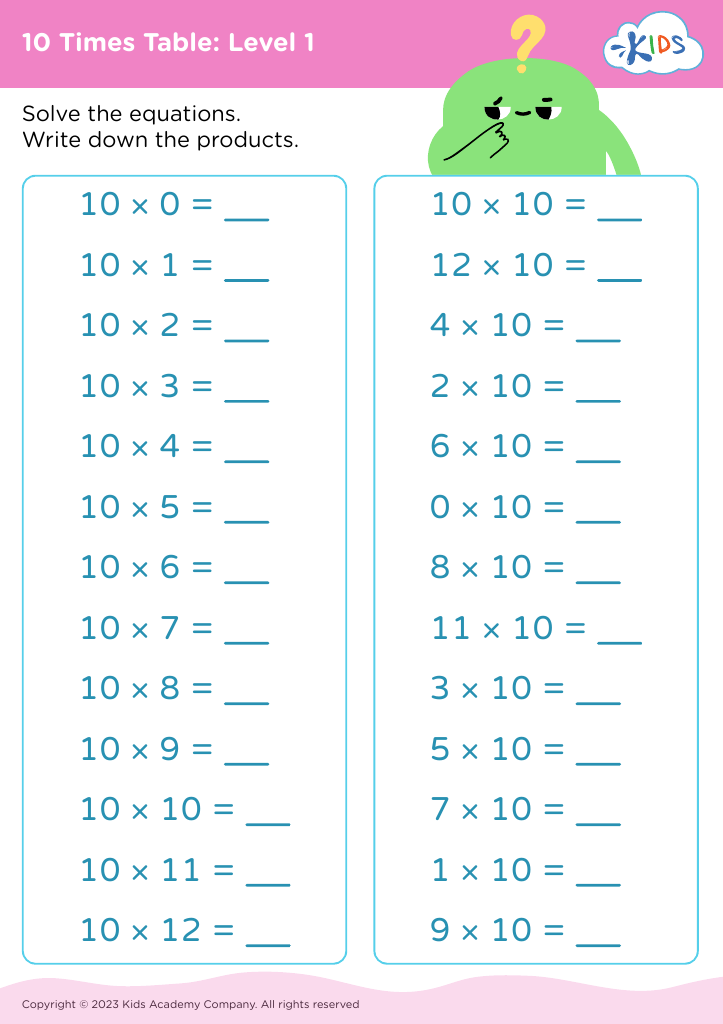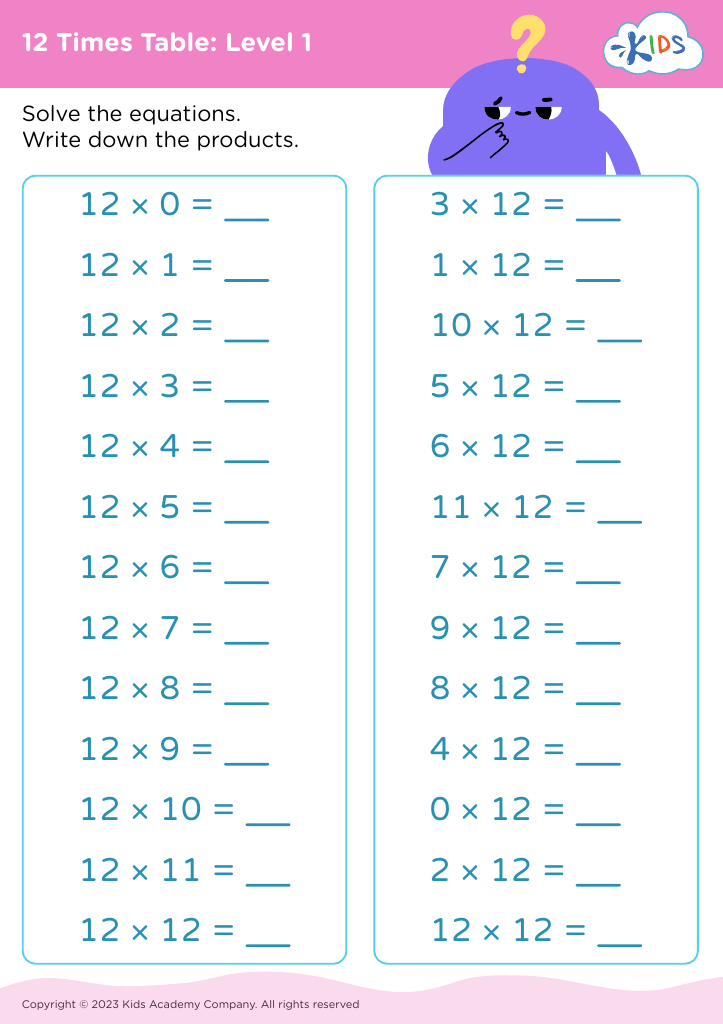Understanding patterns Easy Times Tables Worksheets for 8-Year-Olds
3 filtered results
-
From - To
Unlock the fun of math with our "Understanding Patterns Easy Times Tables Worksheets" designed for 8-year-olds! These engaging worksheets help young learners grasp the concept of patterns in multiplication, building a strong foundation for mastering times tables. With a variety of interactive exercises, children will explore numerical patterns, making math both educational and enjoyable. Perfect for in-class activities or at-home practice, these resources nurture critical thinking and enhance arithmetic skills. Encourage your child's confidence in math as they discover the exciting world of multiplication patterns. Download our worksheets today and watch their mathematical journey blossom!
Understanding patterns in math, particularly with the Easy Times Tables for 8-year-olds, is crucial for several reasons. First, recognizing patterns helps young learners develop a solid foundation in multiplication, which is a core mathematical skill. By identifying patterns, children can simplify their learning process, making it easier to memorize multiplication tables without rote memorization.
For parents and teachers, fostering this understanding can also promote critical thinking skills. When children see that 2×4 is the same as 4×2 or that multiples of five end in 0 or 5, they begin to see relationships between numbers. This deeper comprehension lays the groundwork for more advanced concepts in mathematics, such as division, fractions, and problem-solving strategies.
Moreover, teaching patterns cultivates a positive attitude towards math. When children grasp these concepts, they often feel a sense of accomplishment and motivation, leading to increased confidence in their math abilities. In today’s data-driven world, strong math skills are essential, and understanding these patterns supports lifelong mathematical literacy. Therefore, it is vital for parents and teachers to engage children with pattern-based learning, helping them succeed not just academically, but in their daily lives as well.




















